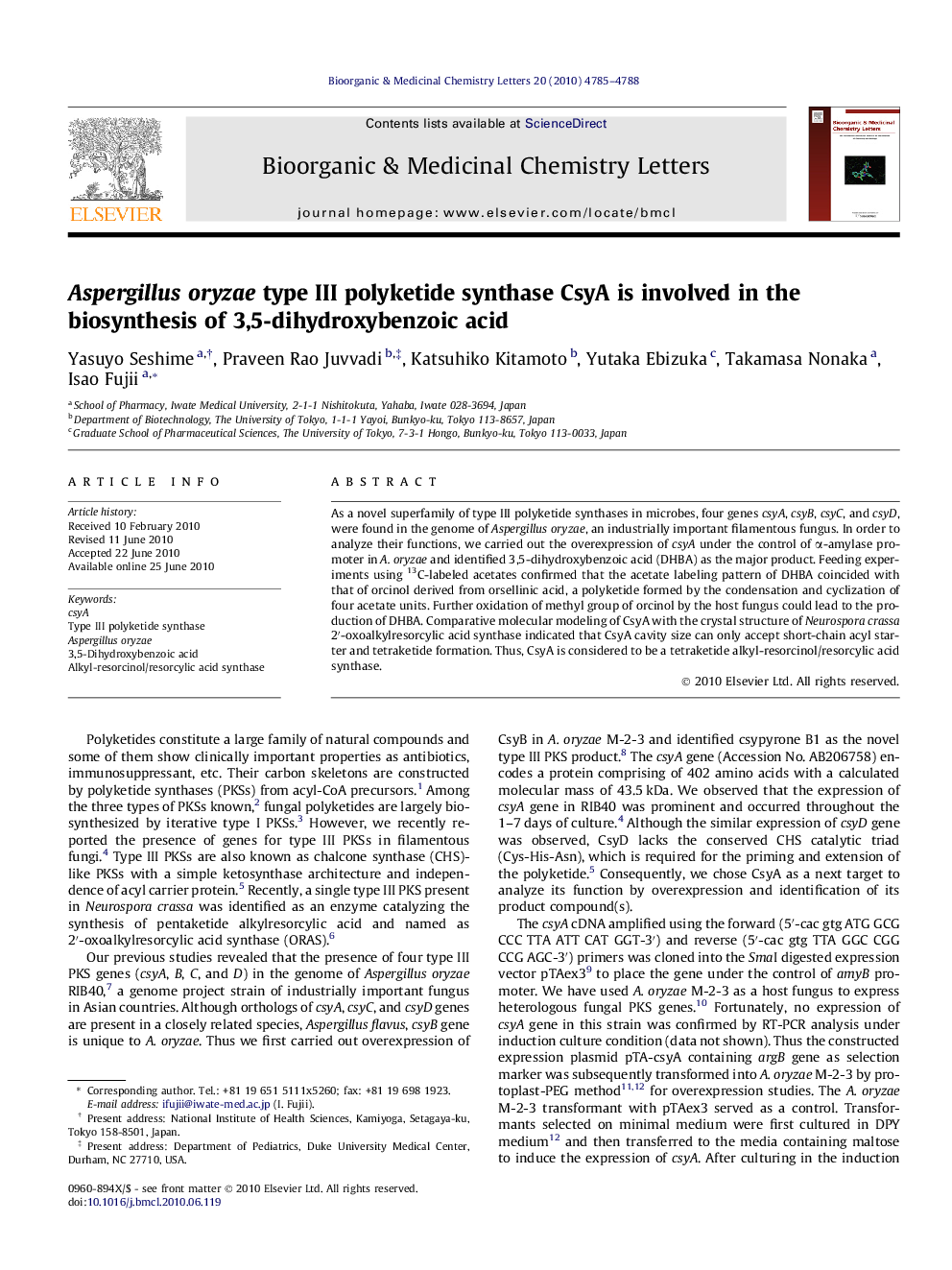| Article ID | Journal | Published Year | Pages | File Type |
|---|---|---|---|---|
| 1371354 | Bioorganic & Medicinal Chemistry Letters | 2010 | 4 Pages |
As a novel superfamily of type III polyketide synthases in microbes, four genes csyA, csyB, csyC, and csyD, were found in the genome of Aspergillus oryzae, an industrially important filamentous fungus. In order to analyze their functions, we carried out the overexpression of csyA under the control of α-amylase promoter in A. oryzae and identified 3,5-dihydroxybenzoic acid (DHBA) as the major product. Feeding experiments using 13C-labeled acetates confirmed that the acetate labeling pattern of DHBA coincided with that of orcinol derived from orsellinic acid, a polyketide formed by the condensation and cyclization of four acetate units. Further oxidation of methyl group of orcinol by the host fungus could lead to the production of DHBA. Comparative molecular modeling of CsyA with the crystal structure of Neurospora crassa 2′-oxoalkylresorcylic acid synthase indicated that CsyA cavity size can only accept short-chain acyl starter and tetraketide formation. Thus, CsyA is considered to be a tetraketide alkyl-resorcinol/resorcylic acid synthase.
Graphical abstractFigure optionsDownload full-size imageDownload as PowerPoint slide
